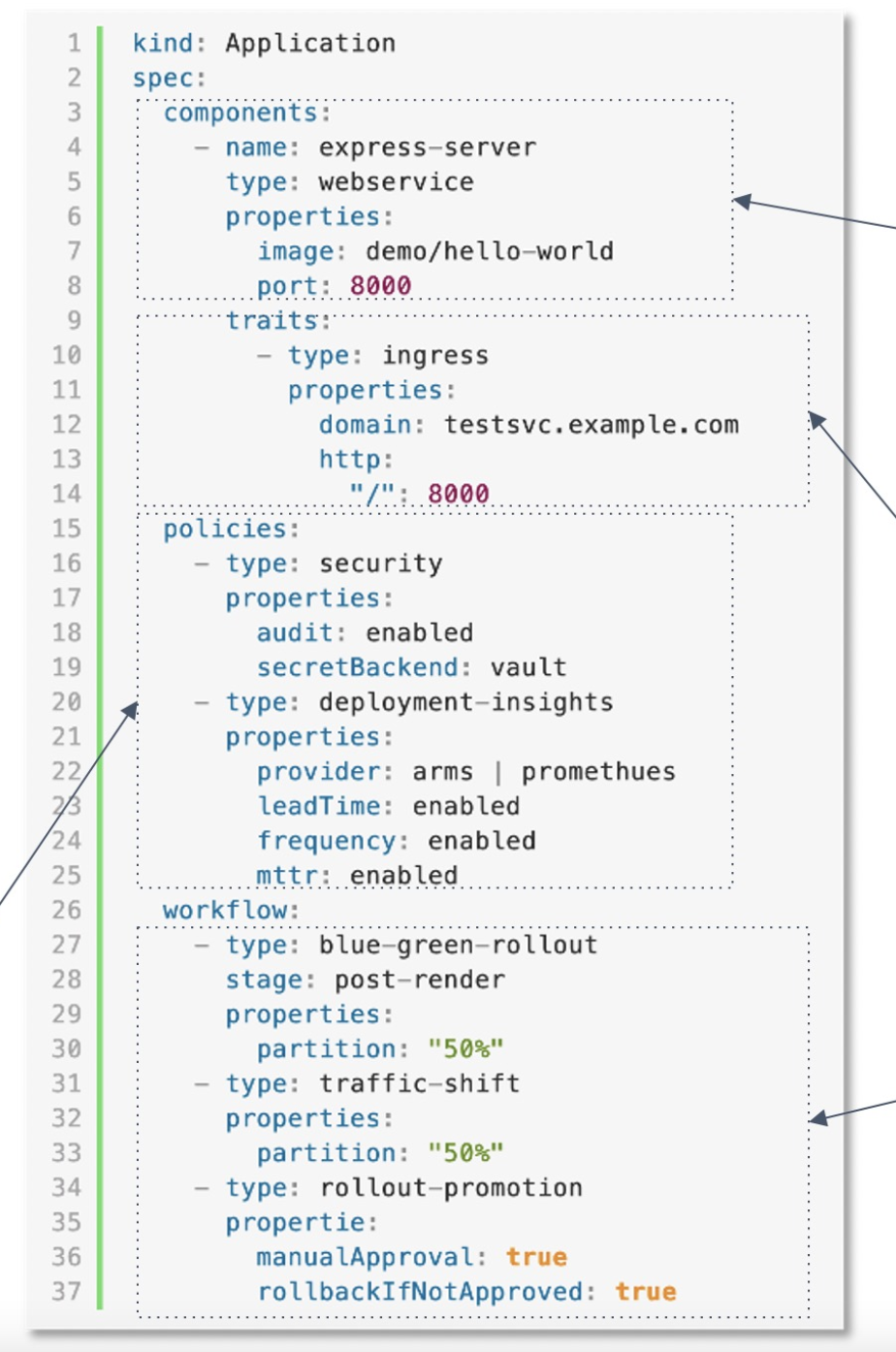Introduction to OAM¶
The OAM application functionality is based on the open-source software KubeVela, which uses the Open Application Model (OAM) as the top-level abstraction for application delivery. It mainly abstracts and integrates Kubernetes resources.
An OAM application consists of four main concepts to achieve standardized and efficient application delivery in a hybrid environment:
- One or more components
- Operational actions
- Application execution policies (Policy)
- Deployment workflows (Workflow)
You can refer to the following diagram from the KubeVela official documentation for a visual representation:

Introduction to Core Components¶
This section only introduces the core components covered by the Workbench.
Components¶
Components define the form of delivery and management for artifacts or cloud services. An application can include multiple components. The recommended practice is to include one main component (core business logic) and additional components (middleware with strong dependencies or exclusive components) in an application. For more information about component types, refer to the kubevela Component Definition documentation.
Currently, the Workbench includes five built-in components based on the open-source kubevela components: CronJob, DaemonSet, K8s-Objects, Job, Webservice . For specific parameter introductions for each component, refer to the Built-in Component List documentation.
Traits¶
Traits are modular and pluggable operational capabilities that can be bound to deployable components at any time. Examples include manual or automatic scaling of replicas, data persistence, setting gateway policies, and automatic DNS resolution. Users can obtain mature capabilities from the community or define their own traits.
Currently, the Workbench includes multiple built-in traits based on the open-source kubevela components, such as Affinity, Annotations, Command, Container-Image, Cpuscaler . For specific parameter introductions for each trait, refer to the Built-in Trait List documentation.
Application Execution Policies (Policies)¶
The Workbench does not currently provide a productized capability for application execution policies. For detailed information, refer to the kubevela reference documentation.
Deployment Workflows¶
The Workbench does not currently provide a productized capability for defining deployment workflows. KubeVela automatically deploys components and traits in the order specified in the arrays. For detailed information, refer to the kubevela reference documentation.
Customization¶
KubeVela allows easy customization and extension based on your needs.
Custom Components¶
Component Definitions allow platform administrators to package any type of deployable artifact as a deliverable "component". Once defined, components of this type can be referenced, instantiated, and delivered in deployment plans (Applications) by users.
For specific operations on custom components, refer to the official documentation: Getting Started with Custom Components.
Custom Traits¶
Trait Definitions provide a set of operational actions that can be bound to components as needed. These operational actions are usually provided by platform administrators as operational capabilities, providing a range of operational operations and policies for a component, such as adding a load balancing policy, routing policy, or performing autoscaling, canary release policy, and more.
For specific operations on custom traits, refer to the official documentation: Customize traits.